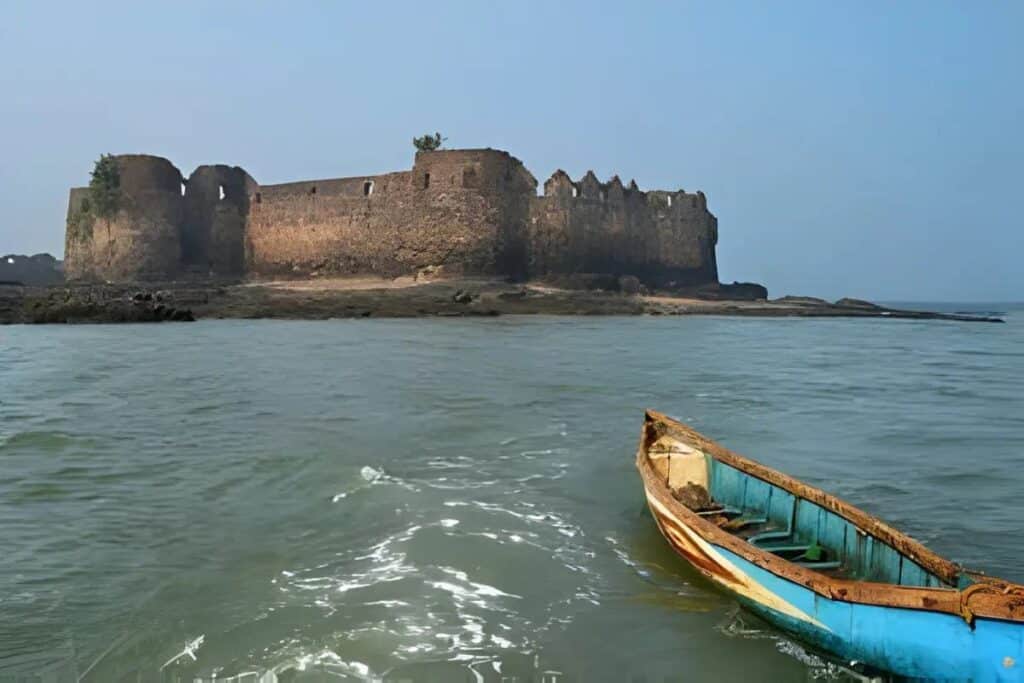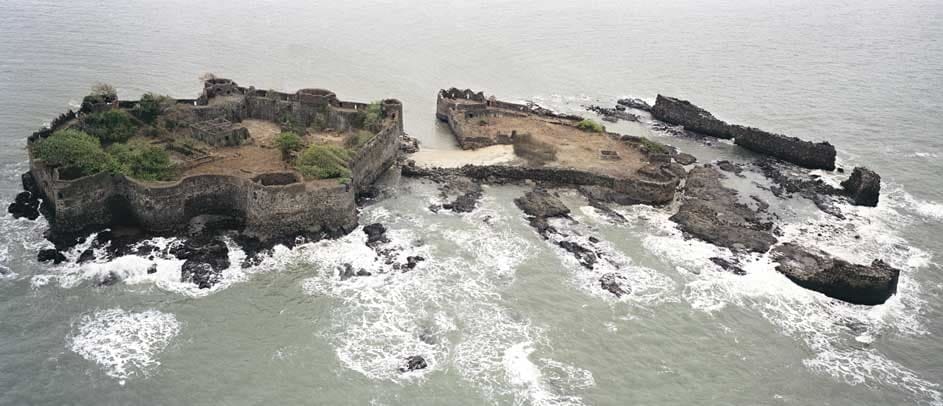Padmadurg Fort, also known as Kasa Fort, stands as an indication of Maharashtra’s rich history and heritage, tributing the resilience of those who defended it. Padmadurg fort history has a great importance behind its standing for such a long time.
Padmadurg fort history:-
Constructed by the Maratha ruler, Chhatrapati Shivaji Maharaj in 1676, Padmadurg was one of the five sea forts.
Interestingly, in Padmadurg fort history, its construction was done in the wake to protect the larger Janjira Fort, which had faced repeated attacks from Portuguese forces and other invaders. Janjira was controlled by the Siddis and was a formidable opponent as it were allied with the Mughal Empire and padmadurg fort history had a significance in serving as a defensive outpost to safeguard the Maratha kingdom.
Padmadurg to Janjira fort distance: –
Padmadurg fort location is about 4-5 kilometres northwest of Janjira, across the sea. This proximity of both the port, being located near Murud in Riagd district, was strategically significance because Padmadurg fort was specially constructed by Chhatrapati Shivaji Maharaj to counter and control the influence of Siddis of Janjira.
Padmadurg fort map – Padmadurg Fort is situated on a small island off the coast of Murud, not far from Janjira Fort. You can reach this island by a boat from Murud coastline but boat services availability often depends on whether condition
Information about Padmadurg Fort History: –
It is built using locally available stones and mortar. It has thick walls and several bastions, around 6, designed to counter naval attacks. There is a small dock area for reflecting padmadurg fort history in defence. The main entrance is however less visible which made it difficult for enemies to launch direct attacks. You can also view Padmadurg from Janjira itself.
Although not as grand as Janjira, Padmadurg Fort History remains accessible to visitors but with permission from customs or navy authorities. You can explore the remains of the fort, its walls, bastions and dock area with scenic beauty of Arabian sea and Janjira fort.
What should I carry to Padmadurg Fort?
To ensure a comfortable and enjoyable visit, here are some things you should consider carrying:
- Waterproof trekking shoes: You’ll be doing some walking and climbing stairs, so sturdy shoes are a must.
- Sun protection: Carry hats, sunscreen, and sunglasses for protection from sun.
- Water and snacks: Stay hydrated and bring your own snacks for long distance.
- Camera: For capturing the amazing views and historical details.
- Tickets/Money: For entry and any potential purchases.
- Binoculars: If you’re interested in birdwatching or getting a closer look at the fort, bring a pair of binoculars.
- Torch: Advisable if you’re to stay after sunset.
- First-aid kit: A must for everywhere.
- Wear comfortable: Clothes that helps in moving freely.

How to Reach Padmadurg Fort
1. If by Air:
The nearest airport is Chhatrapati Shivaji International Airport in Mumbai, which is about 180 km from Padmadurg Fort. From Mumbai, you can take a taxi or cab to Murud village, closest to the fort. It takes around 4-5 hours.
2. By Train:
The nearest railway station is Murud Junction, standing about 15 km from Padmadurg Fort. Trains are available from Mumbai and Pune to Murud Junction. Once you reach Murud Junction, you can take a taxi or rickshaw directly to the fort.
3. By Road:
This is the most convenient way to reach Padmadurg Fort, especially if you’re coming from Mumbai or Pune. You can take a private car or rent a taxi from Mumbai or Pune. It takes around 3-4 hours. Or, you can just take a state transport bus from Mumbai or Pune to Murud. That takes around 5–6 hours.
Once you reach Murud, you can take a boat from Rajapuri Jetty to the fort. The boat ride takes around 30 minutes.
Main attraction points
- 6 bastions
- 42 rusty cannons
- 250 historical cannonballs
- The higher outer walls in shambals.
- The fortification wall of 100 meters collapsed.
(These all-mentioned places were discovered in 2012.)
Entry process
- No ticket required
- You have to take permission from navy or coast guard.

Suitable month to visit this fort
- October – march, during the dry season. The weather is cooler and sea is calmer.
- Avoid visiting during monsoon (June – September), due to rough seas conditions and heavy rains.
Guide:-
Guides are available there to guide the people around the fort. These guides are locals who knows all the past Padmadurg Fort History. Although they will take some charge for guiding you.
Accommodation:-
Hotels & home stays are available in Murud, which is the main town closest to the islands. You can do advance booking as well. But at the time of peak season, you could face some problem in getting the rooms for stay.
DO’S AND DON’T
- Wear sturdy, non-slip shoes because it has slippery surface and uneven terrain.
- Hire a local guide to help direct you around the fort safely.
- Avoid venturing near the edges or cliffs. Stay within marked areas.
- Follows the instruction of the authorities.
- Dress modestly when visiting nearby villages.
Frequently Asked Question (FAQs):-
Q. Who Built Padmadurg Fort History?
Ans: Chhatrapati Shivaji Maharaj
Q. which of the following fort was built by Chhatrapati Shivaji Maharaj?
- Sindhudurg
- Purandar
- panala
- padmadurg
Ans: Sindhudurg and padmadurg fort.
Q. Where is padmadurg fort?
Ans: Raigad district, Maharasthra, India
Q. Who made Padmadurg Fort History?
Ans: Chhatrapati Shivaji Mahara.
Q. Which is the strongest fort in Maharashtra?
Ans: murud – janjira fort
Q. What are the interesting facts about Maharashtra forts?
Ans: All have their own historical significance. The forts tell you all the stories of how both the empires have ruled the state, fought wars and left something behind to be remembered by Janjir.
Q. Which fort is in water in Maharashtra?
Ans: The fort is in water in Maharashtra
- Murud-Janjira Fort.
- Sindhudurg Fort.
- Vijaydurg Fort.
- Kolabadurg.
- Suvarnadurg Fort.





0 Comments